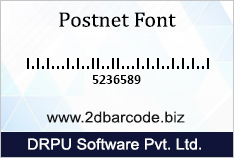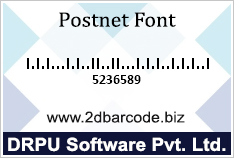

POSTNET (postal numeric encoding technique) is barcode symbology that was used by the United State Postal Service to assist in directing mail. The Zip code and ZIP + 4 code is encoded in half and full-heights bar. Most often the delivery point is added, The barcode starts and ends with a full bar (often called a guard rail or frame bar and represented as the letter "S" in one version of the USPS TrueType Font) and has a check digit after the ZIP, ZIP+4, or delivery point. The encoding table is shown on the right.
Each individual digit is represented by a set of five bars, two of which are full bars (i.e. two-out-of-five code). The full bars represent "on" bits in a pseudo-binary code in which the places represent, from left to right: 7, 4, 2, 1, 0. (Though in this scheme, zero is encoded as 11 decimal or "binary" 11000.)
Zip codes were introduced by U.S postal service in 1963. Zip stands for Zooming Improvement Plan and the code was invented by Robert Aurand Moon in the 1940’s. Zip code is structured number which helps you to locate the address being mailed to. The country is divided 10 zones, and the first digit of the ZIP codes which tells you which zone the mail is to be sent. The next two digit specify the metropolitan area or regional center in that zone and the last two digit indicates the post office. The post office started to use barcodes in 1965 to automate the sorting process.
There are 32 lines in Postnet bar codes. The first and last are always long and they mark the beginning and end of the code. The remaining 30 lines are broken up into 6 groups or 5 line apiece. Each of these groups of 5 lines there are exactly 2 long lines and 3 short lines. Each of these groups represents a single number digit and where 2 long lines appears tell you which digit is represented.
Linear Barcode Fonts
